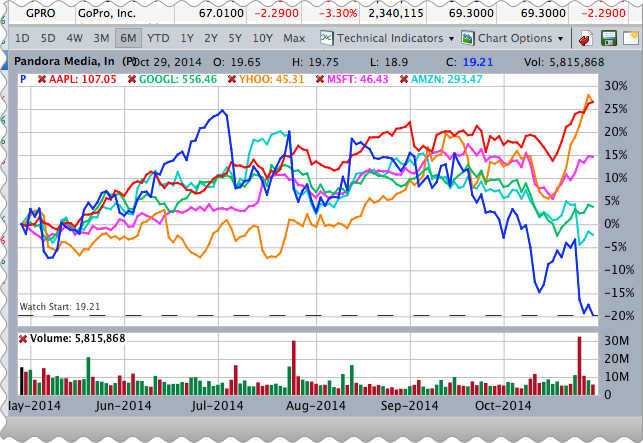Is Big Blue Now Black And Blue (IBM AMZN GOOG)
Post on: 16 Март, 2015 No Comment

International Business Machines Corp. (IBM ) is far from the most exciting investment option in the technology sector. As a matter of fact, despite the Dow Jones Industrial Average hitting a new high in 2014, IBM’s stock has depreciated 11.35% year-to-date. This is not a bullish sign. And it’s not an aberration, either. Over the past three years, IBM’s stock has depreciated 6.71%. Bulls will argue that IBM is in a transformational stage, and that it will still be a long-term winner. Is this likely to be an accurate prediction? It’s possible, especially since IBM has been down before and fought back. We’ll take a closer look below, and we’ll also take a close look at dividends. If a large-cap company can’t deliver growth, it can still offer value via generous capital returns to shareholders.
Growth of Just Hope?
IBM’s recent divestitures will also lead to a revenue decline in 2014. However, margins are expected to improve, and freed-up capital is going to be reinvested to accelerate the company’s transformation and to increase capital returns to shareholders. Can the prior statement, which was made on IBM’s 10-Q, be trusted? That’s impossible to determine, but we can at least look at the past for a hint at what the future might hold.
The Dividend Picture
When it comes to returning more capital to shareholders via dividends and stock buybacks. at least consider IBM’s dividend payout history. IBM has delivered dividend growth for 14 years (since 2000). Dividend payouts are consistent, but increases are small. The dividend annual growth rate over the past three years for IBM is 14.0%. (For related reading, see: Boost Your Dividends with These Large Caps .)
That should be a comforting picture for dividend investors. Currently, IBM yields 2.71%. This is lower than the average for technology, which sits at 3.11%, but it’s still above average compared to the broader market.
Causes for Concern
As previously hinted at: Where’s the growth? IBM claims that growth will come as the company transforms itself. While this is a possibility, it’s also something any company in IBM’s position will say. The problem is that aside from cloud (only 6% of the business), there are no products or services that are going to offer growth. (For more, see: Investing in Cloud Computing .)
Furthermore, IBM has been taking on bad debt and now has a debt-to-equity ratio of 3.18. It’s very difficult for a company (or a country, for that matter) to grow organically when debt is in the way. If there are no real growth catalysts and debt is increasing, then it could lead to further complications, not solutions. Growth is possible, but IBM also has a lot of competition to contend with in technology, which includes behemoths Amazon.com Inc. (AMZN ) and Google Inc. (GOOG ). (For more, see: Invest in Dividend Aristocrats With This ETF .)
Another interesting note here is that top analysts aren’t overly optimistic about IBM right now. Their opinions on IBM as of last month:
Strong Buy: 1
Buy: 2
Hold: 18
Underperform: 2
Sell: 1
These numbers reflect IBM’s current position: no-man’s land. Is it the best or worst investment? No. But investing in a company that has underperformed the market and doesn’t have any obvious and significant growth catalysts might not be the best course of action.














